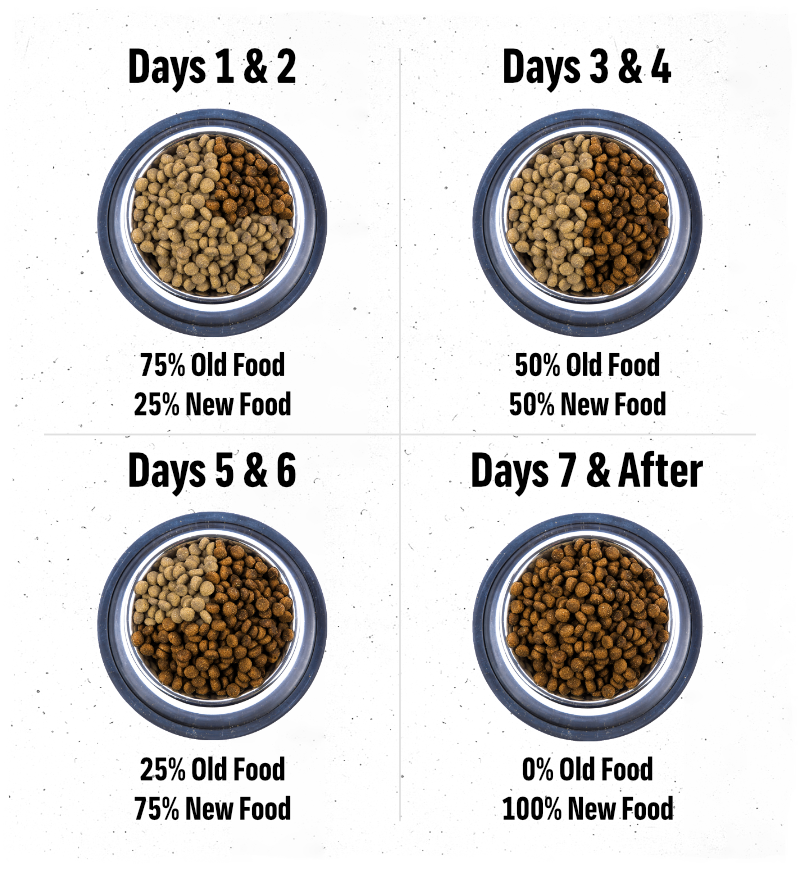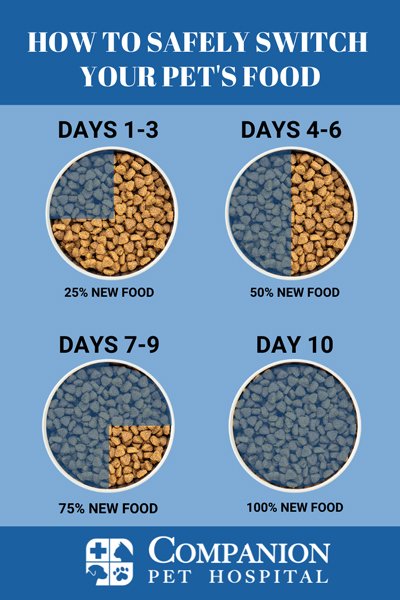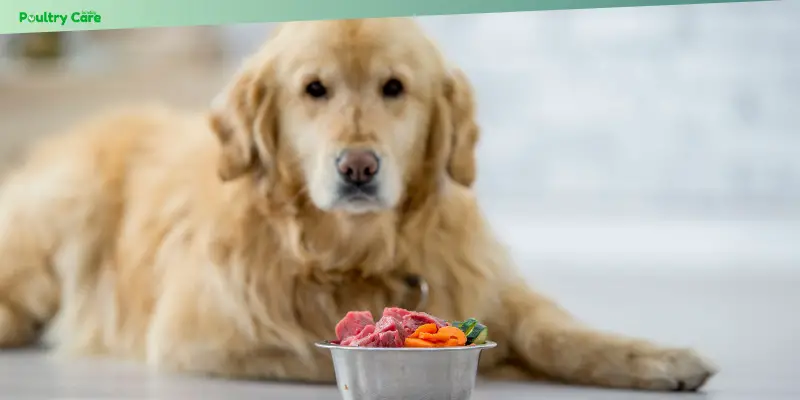Transitioning your dog to new food can be a delicate process. Proper planning ensures your dog’s health and happiness.
Switching your dog’s food isn’t as simple as putting new kibble in their bowl. Dogs have sensitive stomachs, and a sudden change can cause digestive issues. Gradually introducing new food helps prevent this. In this blog post, you’ll learn how to transition your dog smoothly.
We’ll cover the steps to take, how to monitor your dog’s reaction, and tips to make the process easier. By following these guidelines, you can help your dog adapt to their new diet without discomfort. Let’s get started on making this transition seamless and stress-free for both you and your furry friend.

Credit: go-solutions.com
Choosing The Right Food
Transitioning your dog to new food needs gradual steps. Start by mixing small amounts of new food with the current one. Slowly increase the new food over a week to avoid stomach issues.
Choosing the right food for your dog is crucial. It impacts health and happiness. Dogs need balanced nutrition to thrive. Selecting the best diet ensures a smooth transition. Consider several factors before making a choice. It’s about finding what suits your dog’s unique needs.
Assessing Nutritional Needs
Every dog is different. Age and activity level affect nutritional requirements. Puppies need energy for growth. Older dogs may need fewer calories. Active dogs require more protein. Consider your dog’s lifestyle. Choose food that supports their energy needs. Look for balanced ingredients. Ensure vitamins and minerals are included.
Considering Allergies
Some dogs have allergies. Common allergens include chicken, beef, and grains. Watch for signs like itching or digestive issues. If your dog shows symptoms, consult a vet. Choose hypoallergenic options if needed. Read labels carefully. Avoid known allergens. Test new foods in small amounts. Monitor reactions closely.

Credit: kahootsfeedandpet.com
Gradual Transition Process
Transitioning your dog to new food requires a careful and gradual process. This approach helps avoid digestive issues and ensures your pet adapts smoothly. By making small changes over time, you can help your dog enjoy its new food without stress. Let’s explore the steps in this gradual transition process.
Mixing Old And New Food
Start by mixing a small amount of new food with the old food. Begin with 25% new food and 75% old food. Gradually increase the new food over several days. By day four, you can mix 50% new food and 50% old food. Continue to increase the new food until it makes up 75% of the mix. By day seven, the new food should replace the old food completely. This slow adjustment helps your dog adapt.
Monitoring Your Dog’s Reaction
Pay close attention to your dog’s behavior and health during the transition. Watch for signs of digestive upset like vomiting or diarrhea. If any issues arise, slow down the transition process. It is crucial to be patient and attentive. Your dog’s well-being is the priority. A smooth transition ensures your dog remains happy and healthy.
Addressing Common Issues
Transitioning your dog to new food can be a challenging process. You might encounter refusals, digestive problems, or other issues. Addressing these common problems is crucial to ensure a smooth and healthy transition for your furry friend.
Handling Refusals
It’s common for dogs to refuse new food. They may be attached to their current food or simply wary of change. To tackle this, try mixing the new food with the old food. Start with a small portion of the new food and gradually increase it over a week.
Observe your dog’s reaction. If they continue to refuse, consider adding a small amount of warm water or broth to enhance the flavor. Sometimes, a slight change in texture can make a big difference.
Remember, patience is key. Do not force the transition. Allow your dog to get used to the new food at their own pace. Have you faced refusals before? How did you handle them?
Managing Digestive Problems
Digestive issues can arise when switching food. Your dog might experience diarrhea, constipation, or vomiting. To prevent these problems, introduce the new food gradually. A sudden change can shock their system.
If your dog develops digestive issues, revert to their old food and consult your vet. They may recommend probiotics or specific dietary adjustments. Be observant and responsive to your dog’s needs.
A practical tip: keep a journal of your dog’s eating habits and bowel movements during the transition. This can help you and your vet identify any patterns or persistent issues. Do you keep track of your pet’s health changes?
Transitioning your dog to new food requires patience, attentiveness, and a proactive approach. By addressing refusals and managing digestive problems thoughtfully, you can ensure your dog’s diet change is smooth and successful.

Credit: companionpethospital.com
Maintaining A Healthy Routine
Switching your dog to new food can be smooth with gradual changes. Mix the new food with the old one over a week. Watch for any signs of discomfort and consult a vet if needed.
Maintaining a healthy routine is crucial when transitioning your dog to new food. Consistency helps your dog adapt to the change smoothly. It also ensures their digestive system functions optimally, preventing potential health issues.
Setting Feeding Schedules
Start by establishing a regular feeding schedule. Feed your dog at the same times each day. This helps their body anticipate meal times.
Gradually introduce the new food by mixing it with the old food. Increase the new food portion over a week until the transition is complete. This method reduces the risk of upsetting your dog’s stomach.
Observe your dog’s behavior and appetite. Are they eating eagerly? Any signs of discomfort? Adjust the feeding schedule and food portions as needed.
Ensuring Hydration
Keep your dog well-hydrated during the transition. Fresh water should always be available. Hydration aids digestion and prevents constipation.
If your dog is not drinking enough, try adding a bit of water to their food. This can make the food more appealing and help with hydration.
Monitor your dog’s water intake. Ensure they are drinking enough, especially if the new food is dry kibble. Hydration is key to maintaining their overall health.
Does your dog seem more energetic or lethargic? These are signs of how well they are adjusting to the new food and routine.
Frequently Asked Questions
How Long Does It Take A Dog To Adjust To New Food?
A dog typically takes 7-10 days to adjust to new food. Gradually mix the new food with the old to ease the transition.
How Do I Transfer My Dog To New Food?
Gradually transition your dog to new food over 7-10 days. Mix increasing amounts of new food with old food. Start with 25% new, then 50%, 75%, and finally 100%. Monitor your dog for any digestive issues. Adjust if necessary.
What Is The 80/20 Rule For Dog Food?
The 80/20 rule for dog food means 80% of the diet is high-quality dog food, while 20% consists of healthy treats.
How To Change Dog Food Without Upsetting Stomach?
Gradually mix the new dog food with the old over 7-10 days. Increase the new food amount daily. Monitor your dog’s digestion closely.
How Do I Switch My Dog’s Food Safely?
Gradually mix the new food with the old. Increase the new food over 7-10 days.
Conclusion
Transitioning your dog to new food takes time and patience. Start with small changes. Mix a bit of new food with the old. Gradually increase the new food over a week. Watch your dog’s reactions closely. Look for any signs of allergies or discomfort.
Always consult your vet for advice. Keep meals consistent and stress-free. Your dog will adjust smoothly with care and attention. Happy feeding!
Last Updated on May 11, 2025 by Pauline G. Carter

